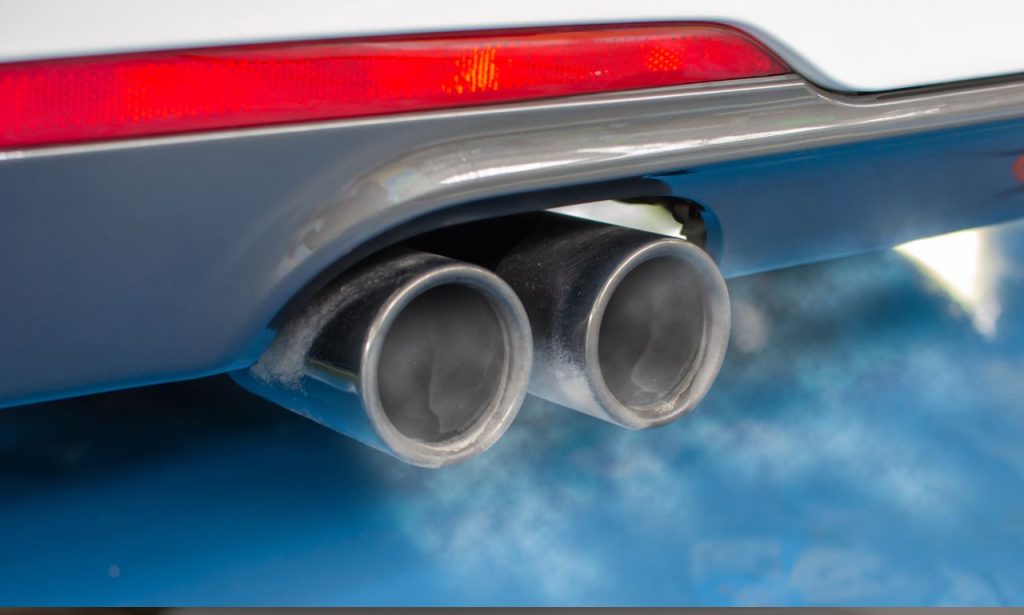You hear it every time you hit the gas – the throaty growl, the satisfying rumble, the undeniable roar that announces your vehicle’s presence. It’s the exhaust note, a symphony of power and performance orchestrated by a complex system of pipes, mufflers, and resonators. But beneath the surface of this auditory spectacle lies a critical factor that often goes unnoticed: what gauge is exhaust pipe?
This question, often overlooked in casual car conversations, holds the key to unlocking your vehicle’s true potential. The gauge, a seemingly insignificant number, dictates the thickness of your exhaust pipe walls, influencing everything from exhaust flow and backpressure to overall performance and longevity.
This comprehensive guide delves deep into the intricacies of exhaust pipe gauge, empowering you with the knowledge to make informed decisions about your vehicle’s exhaust system. We’ll explore the factors influencing gauge selection, decipher the language of gauge measurements, and unravel the impact of different gauges on performance.
Get ready to transform your understanding of exhaust systems and unleash the hidden power within your vehicle.
Key Factors in Determining Exhaust Pipe Gauge
Choosing the right exhaust pipe gauge isn’t a one-size-fits-all affair. It’s a nuanced decision influenced by a confluence of factors, each playing a crucial role in determining the ideal thickness for your specific needs. Let’s break down these key considerations:
1. Vehicle Type and Engine Size

The heart of your vehicle, its engine, dictates the volume of exhaust gases produced. Larger, more powerful engines generate greater exhaust flow, necessitating larger diameter and potentially thicker gauge pipes to accommodate the increased volume without creating excessive backpressure. Conversely, smaller engines with lower exhaust flow rates may perform optimally with smaller diameter, thinner gauge pipes.
2. Intended Application
How you use your vehicle significantly impacts the ideal exhaust pipe gauge. For daily commutes and city driving, where low-end torque and fuel efficiency reign supreme, a thinner gauge pipe within the standard range often suffices. However, if you crave the adrenaline rush of high-performance driving, track days, or competitive racing, a thicker gauge pipe becomes essential. This choice accommodates the increased exhaust flow generated at higher RPMs, minimizing back pressure and maximizing power output.
3. Material Type
The choice between stainless steel and mild steel for your exhaust pipe extends beyond mere aesthetics. Each material possesses distinct properties that influence gauge selection. Stainless steel, renowned for its corrosion resistance and durability, often allows for thinner gauges without compromising longevity. Mild steel, while more susceptible to rust, offers a cost-effective solution, especially in thicker gauges where the added material enhances its lifespan.
4. Budgetary Constraints
While performance should always be a priority, budgetary considerations often play a role in decision-making. Thicker gauge pipes, particularly those crafted from premium materials like stainless steel, typically command a higher price tag. It’s crucial to strike a balance between your performance aspirations and your financial limits, opting for the best possible gauge within your budget.
Gauge Measurements Explained
Navigating the world of exhaust pipe gauges requires understanding the language of measurement. Unlike conventional measurement systems using inches or millimeters, exhaust pipe gauge utilizes a unique system known as the Birmingham Wire Gauge (BWG).
BWG: Deciphering the Code
The BWG system operates on an inverse scale, meaning higher gauge numbers correspond to thinner pipe walls. For instance, a 16-gauge pipe boasts thicker walls than an 18-gauge counterpart. This counterintuitive system can seem perplexing initially, but grasping its logic is crucial for making informed decisions.
Wall Thickness
While gauge numbers provide a standardized way to categorize pipe thickness, it’s essential to remember that they represent a range of wall thicknesses rather than absolute values. For instance, a 16-gauge pipe might have a wall thickness ranging from 0.065 inches to 0.058 inches depending on the manufacturer and material.
Table 1: Common Exhaust Pipe Gauges and Approximate Wall Thicknesses
| Gauge | Wall Thickness (inches) |
| 11 | 0.120 – 0.118 |
| 12 | 0.109 – 0.105 |
| 14 | 0.083 – 0.078 |
| 16 | 0.065 – 0.058 |
| 18 | 0.049 – 0.046 |
| 20 | 0.035 – 0.032 |
Note: These are approximate values. Always refer to the manufacturer’s specifications for precise wall thickness measurements.
Wall Thickness
The thickness of your exhaust pipe walls, dictated by its gauge, plays a pivotal role in shaping your vehicle’s performance characteristics. Understanding this relationship is crucial for making informed decisions about your exhaust system.
Thicker Walls
Pros:
- Increased Durability: Thicker walls provide greater resistance to dents, dings, and other damage, enhancing the longevity of your exhaust system, especially in demanding driving conditions.
- Reduced Noise and Vibration: The added mass of thicker walls helps absorb and dampen engine noise and vibrations, resulting in a quieter and smoother ride.
- Improved Heat Dissipation: Thicker walls facilitate better heat dissipation from exhaust gases, reducing the risk of heat soak and potential damage to surrounding components.
Cons:
- Increased Weight: Thicker gauge pipes, by nature of their added material, increase the overall weight of your exhaust system. While this might be negligible in some vehicles, it can impact performance, particularly in weight-sensitive applications.
- Higher Cost: The increased material cost associated with thicker gauge pipes translates to a higher price tag for consumers.
Thinner Walls
Pros:
- Lightweight Design: Thinner gauge pipes offer a weight advantage, potentially enhancing fuel efficiency and acceleration, especially in smaller vehicles.
- Cost-Effectiveness: The reduced material cost of thinner gauge pipes makes them a budget-friendly option for those seeking to upgrade their exhaust system without breaking the bank.
Cons:
- Reduced Durability: Thinner walls are more susceptible to damage from impacts, road debris, and corrosion, potentially shortening the lifespan of your exhaust system.
- Increased Noise and Vibration: The reduced mass of thinner walls offers less sound dampening, potentially resulting in a louder and more resonant exhaust note.
Different Schedules and Their Relevance
In addition to gauge, exhaust pipe thickness is further categorized by “schedule,” a designation representing the pipe’s wall thickness relative to its diameter. While gauge focuses solely on wall thickness, schedule considers both wall thickness and diameter to provide a more comprehensive understanding of a pipe’s pressure-bearing capacity.
Common Pipe Schedules
- Schedule 40: The most common schedule for standard-pressure applications, offering a balance between cost-effectiveness and adequate strength.
- Schedule 80: Designed for higher-pressure applications, featuring thicker walls than Schedule 40 for increased strength and durability.
- Schedule 160: Reserved for extremely high-pressure applications, boasting the thickest walls among common schedules, providing exceptional strength and resistance to deformation.
Relevance to Exhaust Systems
While schedule designations are more prevalent in plumbing and industrial applications, understanding their significance can be beneficial when selecting exhaust pipes, particularly for high-performance applications where exhaust gas pressures can be substantial.
Material Types

The choice of material for your exhaust pipe extends beyond mere aesthetics. Stainless steel and mild steel, the two most common options, each possess distinct properties that influence performance, longevity, and overall cost.
Stainless Steel
- Corrosion Resistance: Stainless steel’s chromium content forms a protective oxide layer on its surface, effectively resisting rust and corrosion, even in harsh environments.
- Durability: Its inherent strength and resistance to dents, dings, and impacts make stainless steel a durable choice for demanding driving conditions.
- Aesthetics: The sleek, polished finish of stainless steel adds a touch of sophistication to any exhaust system.
Mild Steel
- Cost-Effectiveness: Mild steel, lacking the corrosion-resistant properties of stainless steel, offers a more budget-friendly option, especially in thicker gauges.
- Strength: While not as inherently strong as stainless steel, mild steel’s strength can be enhanced through thicker gauges and protective coatings.
- Availability: Mild steel’s widespread availability makes it easier to source and potentially reduces lead times for custom exhaust fabrication.
Conclusion
The seemingly simple question, “what gauge is exhaust pipe,” unveils a world of complexity and nuance in the realm of automotive performance. Understanding the intricacies of exhaust pipe gauge empowers you to make informed decisions about your vehicle’s exhaust system, unlocking its true potential and enhancing your driving experience.
By carefully considering your vehicle’s specific needs, your intended use, and your budgetary constraints, you can choose the ideal exhaust pipe gauge to optimize performance, enhance longevity, and achieve the desired sound. Remember, the right exhaust system is more than just a visual or auditory upgrade; it’s an investment in your vehicle’s performance and your overall driving enjoyment.
ALSO READ: Why Causes Air Conditioner Pipes to Freeze
FAQs
A: While it’s technically possible to mix and match gauges, it’s generally not recommended. Abrupt changes in pipe diameter can create turbulence and disrupt exhaust flow, potentially hindering performance. It’s best to consult with an experienced exhaust specialist to determine the optimal gauge configuration for your specific needs.
A: It’s recommended to visually inspect your exhaust system at least twice a year, preferably during routine oil changes or tire rotations. Look for signs of rust, cracks, dents, or loose components. If you notice any damage, address it promptly to prevent further issues and ensure the longevity of your exhaust system.




